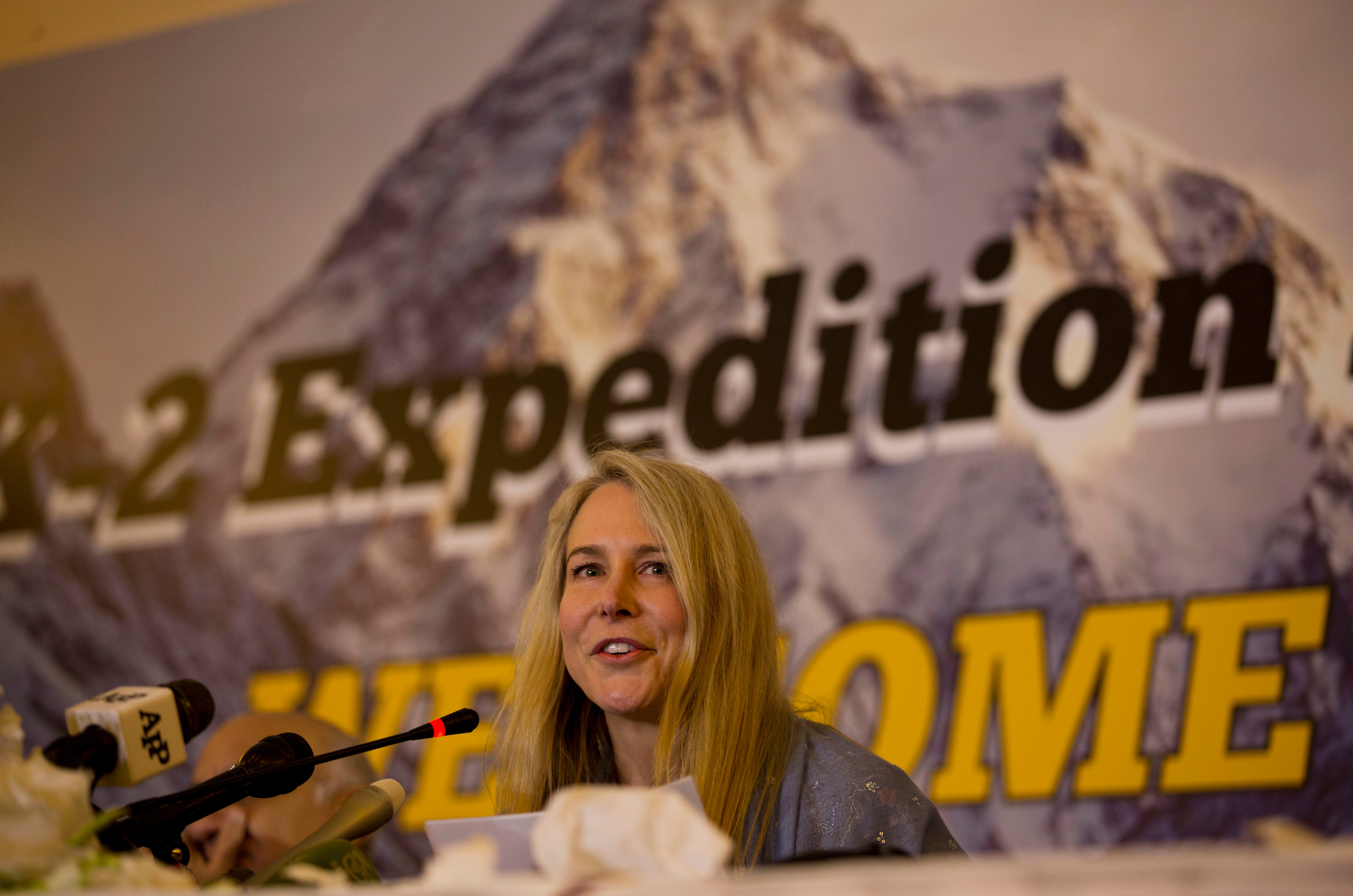EXPLAINER: K2 beckons the daring, but rarely in winter
K2's ‘savage’ peak beckons the daring, but rare is the climber who answers the call in winter

Your support helps us to tell the story
From reproductive rights to climate change to Big Tech, The Independent is on the ground when the story is developing. Whether it's investigating the financials of Elon Musk's pro-Trump PAC or producing our latest documentary, 'The A Word', which shines a light on the American women fighting for reproductive rights, we know how important it is to parse out the facts from the messaging.
At such a critical moment in US history, we need reporters on the ground. Your donation allows us to keep sending journalists to speak to both sides of the story.
The Independent is trusted by Americans across the entire political spectrum. And unlike many other quality news outlets, we choose not to lock Americans out of our reporting and analysis with paywalls. We believe quality journalism should be available to everyone, paid for by those who can afford it.
Your support makes all the difference.K2′s “savage” peak beckons the daring, but rare is the climber who answers the call in winter.
Dwarfed only by Mount Everest, K2 is the world’s second highest peak at 8,611 meters (28,250 feet), and it is one of the deadliest, killing one climber for every four who succeed in reaching its summit through its steep rock faces, glacier climbs and devastatingly brutal weather.
In winter, the odds are even worse.
This week, hope is waning for some of the latest mountaineers to attempt it. Ali Sadapar of Pakistan, Jon Sorri of Iceland and Juan Pablo Mohr of Chile were last heard from on Friday and were reported missing Saturday. Heavy clouds obscuring the mountain have repeatedly forced halts in the search for them.
American climber George Bell enshrined K2’s reputation — and a nickname that stuck — after a 1953 summer attempt during which he and his team members nearly plunged to their deaths. He told a reporter: “It’s a savage mountain that tries to kill you.”
HOW DEADLY IS K2?
K2 on the Chinese-Pakistani border in the Karakorum Range, has one of the deadliest records: 87 climbers have died trying to conquer its treacherous slopes since 1954, according to Pakistan Alpine Club secretary Karrar Haidri.
That’s compared to 377 who have successfully reached the summit, Haidri said. In contrast, Everest has been summited more than 9,000 times, while around 300 have died on the mountain.
Winters on K2 are so much more dangerous that climbs are rarely even attempted. Winter winds can howl in at 200 kilometers an hour (124 mph), and temperatures can hit a bone-chilling minus 60 Celsius (minus 76 Fahrenheit).
Only eight expeditions have attempted a winter ascent, Haidri said.
Only one has succeeded, just last month, when 10 Nepalese climbers summited on Jan. 16. That same day saw the confirmation of the death of Spanish climber Sergi Mingote, who fell hundreds of meters as he tried an ascent without supplemental oxygen. Two weeks later, a Bulgarian was killed.
As difficult as the ascent is, the descent is even deadlier, said Vanessa O’Brien, the first American-British woman to summit K2.
On 8,000 meter-plus peaks, “85% of deaths happen on descent ... because climbers use all their energy for the summit bid and leave no reserves.”
WHY IS K2 SO DANGEROUS?
K2 is a collection of nightmarish natural challenges, one more daunting than the other. It is the coldest and windiest of climbs. At places along the route, climbers must navigate nearly sheer rock faces rising 80 degrees, while avoiding frequent and unpredictable avalanches. Glacier ridges can suddenly explode into cascades of giant chunks of ice.
K2′s most popular ascent route is known as the Abruzzi Spur, or southeast ridge, which extends an extraordinary 3,311 meters (about 10,860 feet) toward the summit.
The sheer length alone would seem indomitable, but there’s more.
Along the route is a series of seemingly impossible natural hurdles with names like the House Chimney, the Black Pyramid and the Shoulder. Surmounting those only brings the climber to perhaps the deadliest part of the climb, the Bottleneck, a treacherous steep gully ridged with columns of glacial ice prone to collapsing.
It was here in 2008 that one of those ridges broke free sending an avalanche crashing into a team of mountaineers, causing most of the 11 deaths that day in K2’s deadliest disaster.
SO WHAT IS THE ALLURE?
O’Brien says the deadly mountain appeals to the unique spirit of a mountaineer, testing the strongest climber. She summited K2 in 2017 after two earlier attempts, described in her recent autobiography, “To the Greatest Heights: Facing Danger, Finding Humility, and Climbing a Mountain of Truth.”
“The fascination of K2 for climbers is that while it seems so accessible, it is still really, really hard,” she said. “On K2, the only guarantee is that something will go wrong.”
She said mountaineers are either risk-takers or reward-seekers by nature and believe they can beat the odds. But “K2 flicks them down and makes them earn their stripes before they can ever see those glorious summit views.”
“Put simply, what appears a simple challenge, turns into Dante’s inferno.”